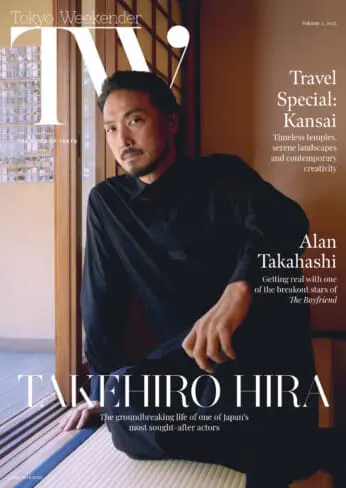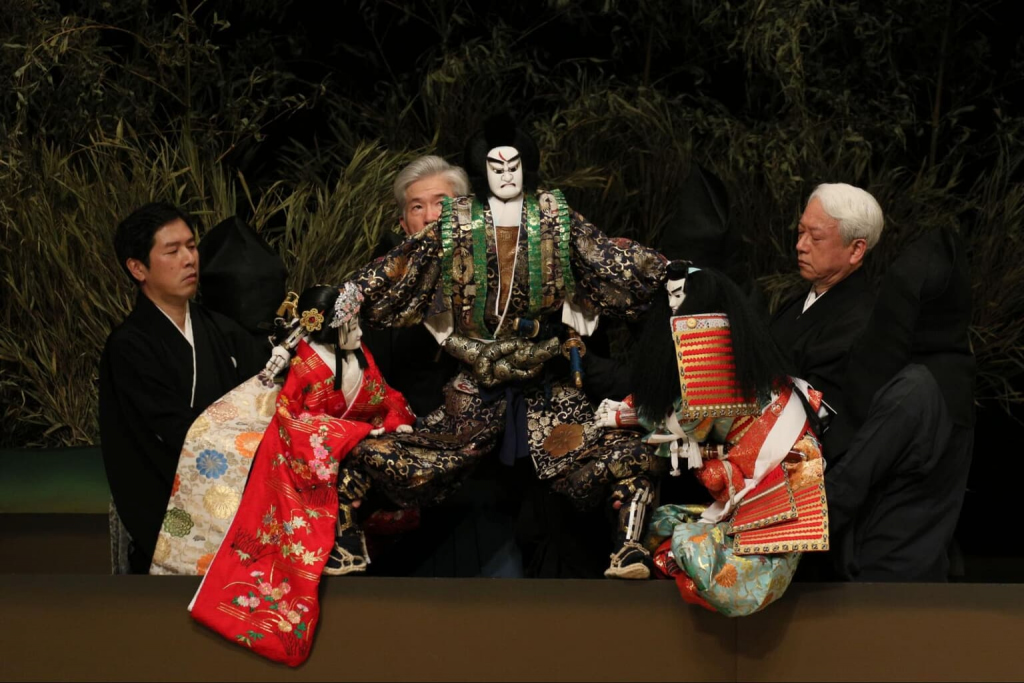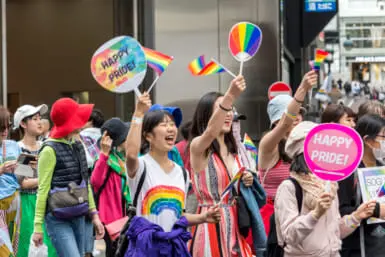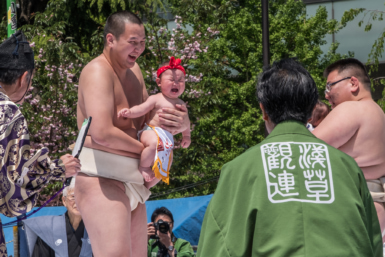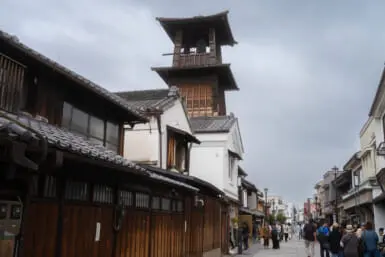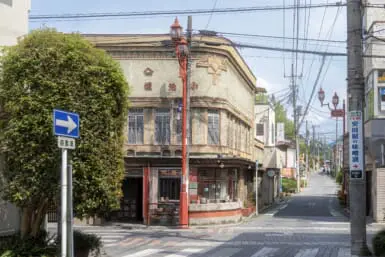Part of why Tokyo is always exciting is the different exhibitions piquing our curiosity. This fall, from noh to the wonders of manga, there is a myriad of cultural events to see for those wanting to deepen their knowledge of Japanese culture. Here are our five must-see cultural events in Tokyo.
All of these events are possible thanks to the support of the Japan Cultural Expo. Learn more about the initiative and its other events on the expo’s official website.

Small karabitsu chest with plovers by the shore in maki-e and inlaid mother-of-pearl. Heian Period, 12th century, Kongobuji Temple, Wakayama. National Treasure. Image from Koyasan Reihokan Museum
1. Magnificent Maki-e: Tales of Urushi and Gold Over a Thousand Years
Maki-e is a traditional Japanese art form of decorating lacquerware. Decorations and sceneries are drawn with urushi lacquer and dusted with gold or silver powder for extra splendor. The lacquerware itself is a beautiful piece, but it’s elevated further with maki-e.
“Magnificent Maki-e: Tales of Urushi and Gold Over a Thousand Years” is the fruit of a joint effort by three institutions: the Mitsui Memorial Museum (Tokyo), the MOA Museum of Art (Shizuoka Prefecture) and the Tokugawa Art Museum (Aichi Prefecture). It features a total of 188 works including narrative picture scrolls, folding screens, Buddhist scriptures, calligraphy and more. In the exhibited collections throughout the three institutions, there are 25 national treasures and 51 important cultural properties. The Tokyo venue will exhibit a total of 127 items, including 7 National Treasures and 32 Important Cultural Properties.
This maki-e exhibition is a rare chance to view many art and cultural treasures in one place.
When: Until Nov 13
The exhibition will then head to Nagoya’s Tokugawa Art Museum, where it will be on display from April 15 to May 28, 2023.
Learn more via the Mitsui Memorial Museum official website.

“Shoki” the Ghost: Higashikawa Mitsuo (Photo: Kameda Kunihei)
2. Discover Noh & Kyogen: Special Performance for Foreign Visitors at The National Noh Theatre
Noh is one of Japan’s oldest forms of theatrical performance. It originated in the Muromachi Period (1336–1573), and most noh plays tell the stories of Japanese mythology, literature and historical figures. As an art form, noh is very codified. The masks, movements and costumes all help the audience understand whether characters are men, women or gods; whether they are sad, mad or scared. They also can reflect age or occupation. Noh also includes comical intermissions, which mainly features dialogue between two or three characters depicting ordinary people. This particular discipline is called kyogen.
Language barriers and use of classical Japanese make enjoying noh and kyogen a challenge for non-Japanese speakers. The National Noh Theatre has been putting a lot of energy into making noh and kyogen more accessible. One notable initiative is the addition of individual screens on the back of every seat that can display subtitles in several languages. Some performances also include explanations suitable for all audiences, even spectators who may be unfamiliar with noh and kyogen.
On October 14, those interested to learn more about noh and kyogen and attend a special performance of two classic titles: Suminuri (“Black Crocodile Tears” in English), a kyogen play, and Shoki (“‘Shoki’ the Ghost”), a noh play. These performances will open with English commentary by associate professor and author Ryusuke Koyama. There will also be language support available in Japanese, English, Chinese, Korean, Spanish and French.
When: Oct 14
Learn more via The National Theatre official website.

Photo of officials who organized the Yushima Seido Exposition sponsored by the Ministry of Education
3. Tokyo National Museum: Its History and National Treasures
The Tokyo National Museum is celebrating its 150th anniversary this year. To mark the occasion, the institution is showcasing its masterpieces, which include 89 designated national treasures. There will be 150 artworks in this special exhibition, a nod to the 150th anniversary, displayed in two parts.
“Part One: The National Treasures of Tokyo National Museum” will showcase the 89 national treasures. These range from screen paintings and sculptures to swords and religious objects. This is the first exhibition to feature a diverse showcase of a high number of national treasures in the museum’s history.
“Part Two: 150 Years at Tokyo National Museum” will present the history of the museum through various artworks, records, reproduction exhibits and videos.
During parts of the exhibition, there will be rotations of displayed items.
When: Oct 18–Dec 11
Learn more via the Tokyo National Museum 150th anniversary website.

Golgo 13 © Saito Takao/Saito Production
4. “Manga Edutainment!” Project Exhibition
Fun and full of interesting facts, manga is a great example of “edutainment” – a blend of education and entertainment. “Manga Edutainment!” is a project developed by Manga Night precisely because they believe in learning through stories. The project selects and recommends educational manga to readers in Japan and abroad. This fall, Toshima Ward and Manga Night are putting together a special exhibition with the theme of “learning manga, learning with manga.”
The exhibition will consist of three parts, each focusing on one work, and will take place in the newly renovated Toshima Showa Museum of History and Culture (scheduled to be open in November 2022). The first part of the exhibition focuses on the Golgo 13, and will last until December 18. Other details regarding the exhibition will be announced at a later date.
When: Nov 3, 2022–Mar 26, 2023
Those interested in seeing part of the selection of educational manga can do so at reading space Manga Pit. Entry fee is ¥500 for adults, though on Tuesdays, readers can go and read to heart’s content for free.
Learn more via the “Manga Edutainment!” official website.

Photo courtesy of The National Theater
5. Discover Bunraku: Bunraku for Beginners at The National Theatre
Many people know of kabuki, but perhaps few know of bunraku. Another of Japan’s traditional forms of performing arts, bunraku is a type of puppet theater. “Discover Bunraku” is specially designed for those who may have never seen a bunraku performance or know very little about it, and includes an in-depth and fun explanation of the fundamentals of bunraku in both Japanese and English before the play.
On December 12, those interested can see Ehon Taikoki, one of the great bunraku plays to date. The story is based on of the historic Honno-ji incident, an attempted assassination resulting in the suicide of Oda Nobunaga, and follows protagonist Takechi Mitsuhide (referencing Nobunaga’s retainer, Akechi Mitsuhide). The original play takes place over 13 days, during which Mitsuhide goes through a handful of hardships and obstacles, though of those 13, only one day will be performed at this event.
When: Dec 12
Learn more via The National Theatre official website.
What do you think about the Japan Cultural Expo’s variety of cultural events and programs? You can share your opinion with the organization by answering this short survey.
Sponsored Post
